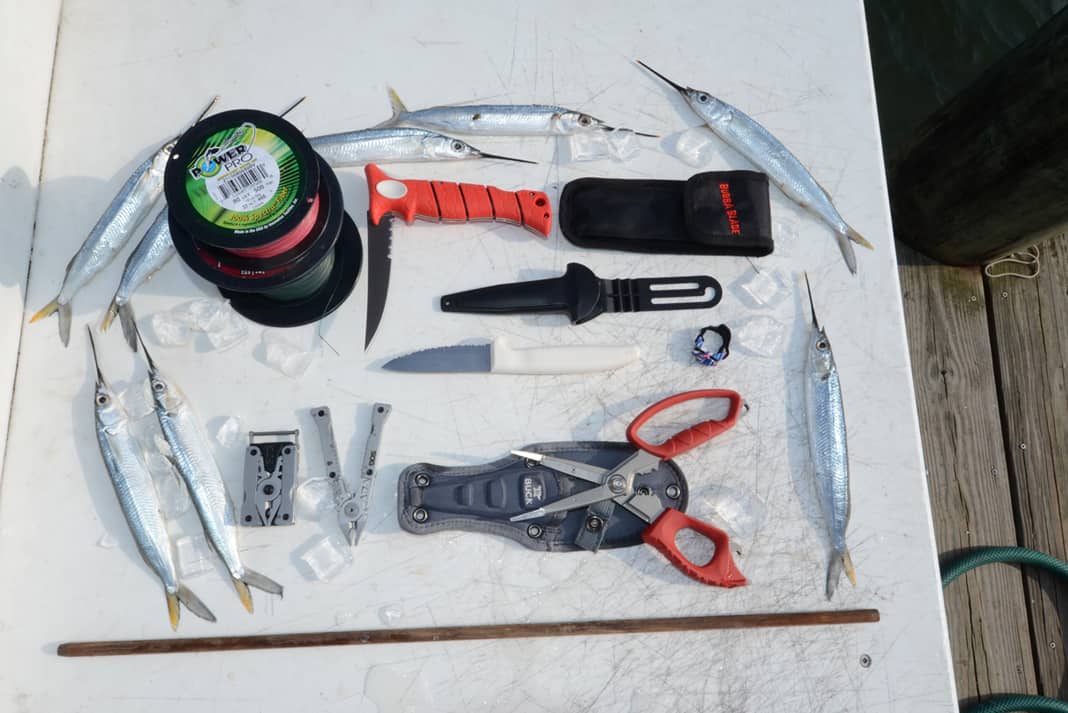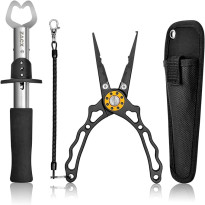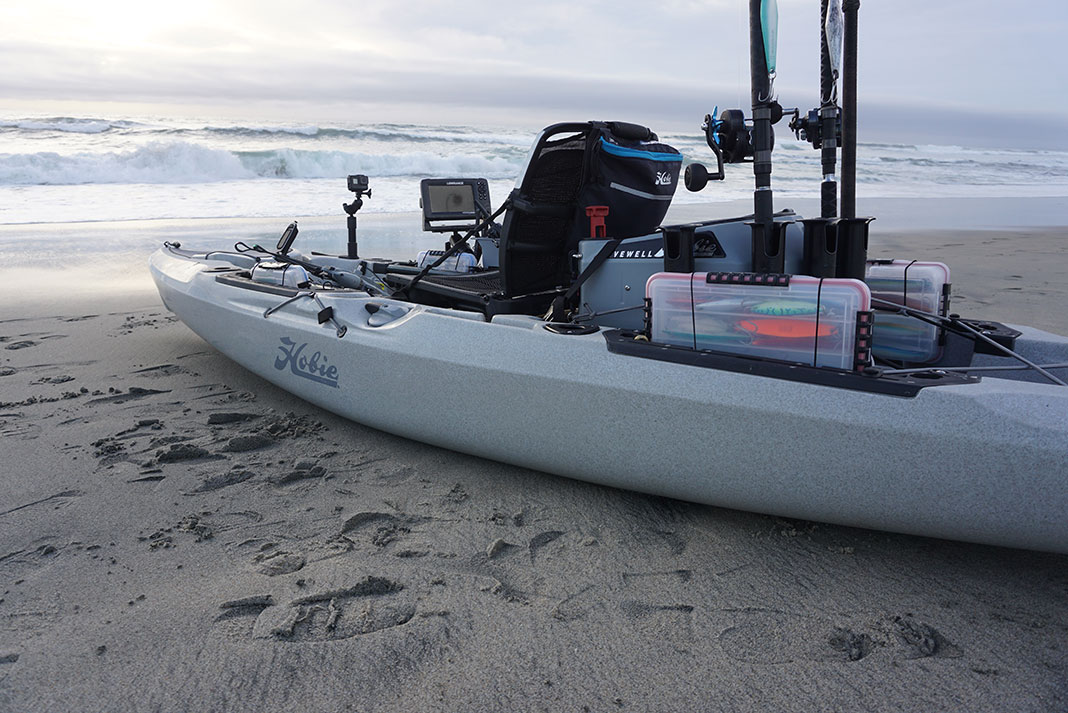When a fish is violently flopping on the deck swinging three treble hooks with nine sharp points, I grab my fishing pliers. I also grab my pliers to cut line, tighten a knot, replace a hook or crush a barb.
There are hundreds of uses for fishing pliers and dozens of fishing pliers to fit your needs. To cover the bases, you’ll need long-nose pliers, short-nose pliers, crimping pliers, split-ring pliers and forces. The best fishing pliers get the job done right with high-quality materials, smart construction, ergonomic design and convenient storage to stay ready for anything.
Editor’s Picks: Best Fishing Pliers for 2024
Our top picks for the best fishing pliers available to kayak anglers in the Kayak Angler’s Buyer’s Guide. See and review all fishing tools here.
Best Fishing Pliers

Magniplier Salt
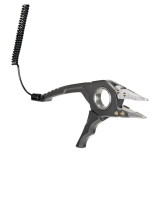
Flyweight Plier

X01 Aluminum Fishing Pliers

6.5" Teflon Super Pliers
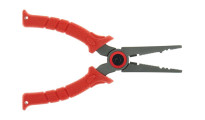
Stainless Steel Pliers
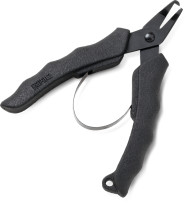
Mini Split Ring Pliers
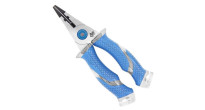
7.5" Titanium Bonded Plier
Buying Advice for Fishing Pliers
Styles of Fishing Pliers
From fly fishermen on a mountain stream to offshore anglers on the Gulf Stream, there are dozens of types of fishing pliers to meet every angler’s demands. Depending on how you fish, you’ll probably need more than one type. On my boat, I carry short-nose, long-nose, split-ring and crimping pliers. In the list below, you’ll find every type to meet your needs.
Pliers are an extension of your hand, offering more power and precision without endangering your fingers with pointy hooks and teeth. But pliers do much more than unhook fish. Pliers cut line, crimp leader and open split rings. While multi-function pliers are sufficient in a pinch, to get the best performance, you need pliers specifically designed for crimping, cutting or opening a split ring.
Needle Nose Pliers
Needle nose fishing pliers are the most popular. Convenient for pulling a hook out of a fish’s mouth, crushing a hook barb, cutting line and a hundred other jobs, needle nose pliers are the set you’ll use most often.
The best-performance, high-quality needle nose pliers are corrosion-resistant and precision-engineered for years of reliable service. They’ll also have a line cutter in the jaw or on the side of the pliers. Cutters in the jaw produce more power, while jaws on the side of the cutter make a more accurate cut. To extend their life, the best models also feature replaceable cutter blades and jaw teeth.
Short-Nose and Long-Nose Pliers
Keep a pair of short-nose and long-nose pliers on hand. Short-nose pliers provide more power when wrestling a hook out of a fish’s jaw. Long nose pliers are essential to finesse a hook from deep in a fish’s mouth.
Split-Ring Pliers
Split-ring fishing pliers are essential for changing hooks and adding hardware to lures and rigs. At the tip of the split ring pliers’ jaws, a little tooth splits the ring to remove it from the lure. I recommend a pair of large split-ring fishing pliers and a pair of small split-ring fishing pliers to match the size of your various split rings.
Pistol Grip Pliers
Pistol grip pliers are long-nose pliers with a bent handle. The angled handle provides more leverage when removing a hook from a big fish. Pistol grip pliers take up less space, making them easier to store than long-nose pliers with a straight handle.
Forceps
Forceps are small pliers with locking jaws. They are a must-have for anglers using little hooks and tying small knots. Forceps are also great for holding a small lure while tying it to the leader. They’re popular with fly anglers for removing tiny flies from the mouths of small fish.
Clippers
Clippers are a convenient way to make a precision line cut. The small blades cut extremely close to the knot to remove the tag line without a trace. Clippers also fit in a small pocket so they are out of the way.
Crimpers
Crimpers are necessary for making strong connections with heavy fishing leader. Fishing line over a 100-pound test requires a metal crimp to make the strongest connection. The crimpers squeeze the crimp to join the line. Most crimpers include heavy-duty line clippers, so you can crimp the connection and cut the tag end of the line. Choose a crimper with jaws to match the diameter of the line you will be connecting.
Fishing Plier Features
Fishing pliers pack a lot of features in a small tool. In addition to jaws for gripping, you’ll find cutters, crimpers, straighteners and split ring pliers.
Look for pliers with strong, grippy jaws and sturdy handles with textured grip. To get the most out of your tool, consider corrosion-resistant materials and sturdy construction. Top-of-the-line pliers use precision engineering to maximize strength and smooth operation.
Fishing Pliers Construction
Thanks to modern technology, you can get great tools for a reasonable price. Plier quality is judged on materials and construction. Corrosion-resistant titanium and aluminum fishing pliers last a lifetime, and the moving parts remain tight and smooth after years in the dirt and mud. For the most comfortable gripping power, the best fishing pliers are also ergonomically designed with a molded handle to fit perfectly in your hand.
Titanium Fishing Pliers
Titanium Fishing Pliers are the top of the top-of-the-line. Titanium has the lowest density-to-strength ratio of any metal. That means titanium is as strong as steel but much lighter. Titanium is also corrosion-resistant. For anglers who are hard on their pliers, titanium is always ready for action.
Titanium pliers also have replaceable cutter blades and plier jaws. This allows them to use high-carbon steel for cutting and stainless steel for gripping. And when the grippers and cutters wear out or corrode, you can replace them. The ultimate performance comes with a cost though. Titanium is the most expensive plier option available.
Aluminum Fishing Pliers
Light and corrosion-resistant, aluminum is the perfect metal for premium fishing pliers. Aluminum pliers are less expensive than titanium. Aluminum is still softer than steel, so the best sets will have replaceable steel jaws and cutters. For a cool look, you’ll also see these pliers often anodized in dozens of colors.
Stainless Steel Fishing Pliers
For inexpensive and reliable pliers, stainless steel combines corrosion resistance with durability. The better pairs use marine-grade stainless steel with the highest corrosion resistance. Note that stainless steel is heavier than aluminum and titanium, though. To maintain performance, less expensive stainless steel fishing pliers are protected with a corrosion-resistant coating. Since stainless steel is strong, cutters and crimpers can be molded into the pliers.
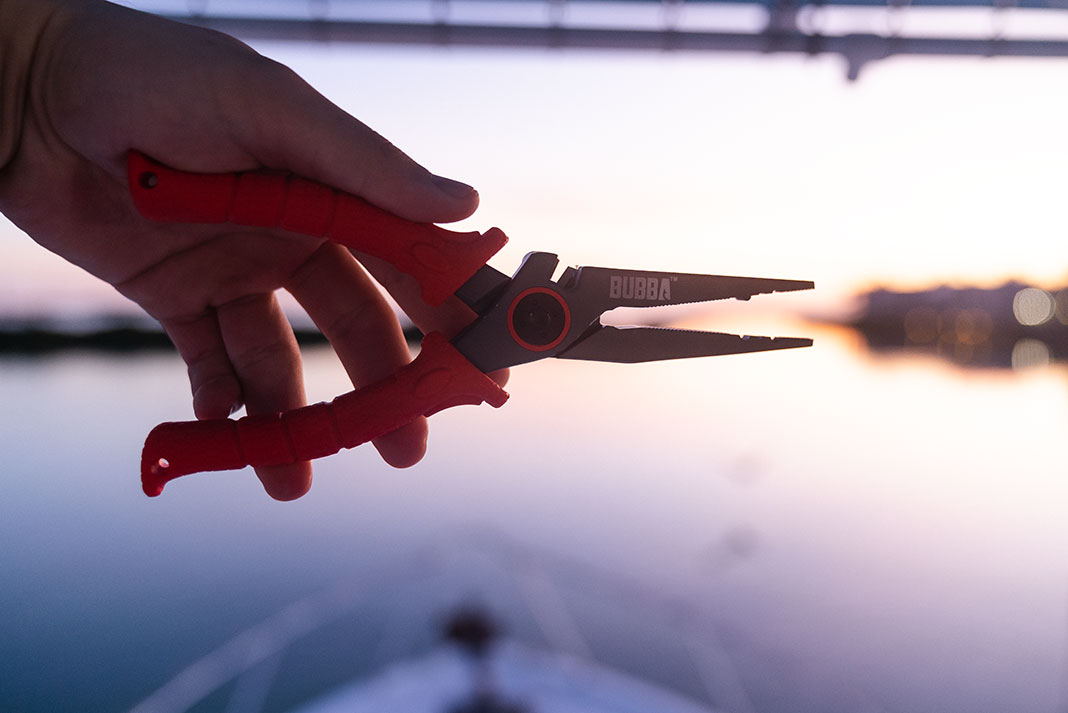
Choosing Between 6.5” vs 8.5” Fishing Pliers
Choosing plier length is a critical decision. Shorter pliers provide more gripping power, while longer pliers are best for digging deep into a fish’s mouth. Choosing between 6.5” vs. 8.5” pliers depends on how the pliers will be used.
The 6.5” pliers are great for regular use, unhooking fish, cutting line or crushing a hook barb. Smaller pliers also fit in a holster and are easy to carry.
Longer 8.5” pliers are necessary when a hook is lodged deep in a fish’s throat. The long jaws and handles are convenient for retrieving a bolt that falls into the bilge or securing a crab running loose on the deck.
The best way to choose between using 6.5” and 8.5” pliers is to buy both sizes and see the various scenarios where each works best.
Choosing Saltwater Fishing Pliers
Saltwater is tough on fishing pliers. Saltwater corrodes metal faster than freshwater, and the grit and grime gum up moving parts.
For choosing saltwater pliers, start with the highest quality corrosion-resistant materials like aluminum, titanium and stainless steel. Then, look for removable jaws and cutters you can replace when they wear down.
Saltwater fishing pliers are easy to clean and maintain—just rinse them with freshwater and let them dry. Occasionally, give the pliers a coating of light oil to keep them working smoothly. To make maintenance easier, look for saltwater fishing pliers you can take apart without special tools.
Fishing Plier Cost
Fishing pliers cost between $20 to almost $400. That’s a huge price range, so what’s the difference?
Cheap pliers do not use the best corrosion-resistant materials or the strongest construction. Inexpensive pliers use molded handles and don’t have replaceable parts.
On the other end of the price scale, the best pliers use high-quality materials and precision design. They have replaceable cutters and jaws for years of use. They are also compact to easily carry and store yet powerful to firmly grip a hook stuck firmly in a fish’s jaw. A nice set of pliers also includes a sturdy sheath to carry the pliers and a lanyard to keep the pliers from falling overboard.
Where to Buy Fishing Pliers
The best place to buy fishing pliers is at a specialty fishing outfitter or bait and tackle shop. An outfitter or bait and tackle shop has the widest selection of pliers for the best choice.
Before you buy pliers, get a feel for how they fit in your hand and how you will manipulate the pliers to cut line or grab a fish hook.
At a tackle shop, you can ask the staff for suggestions based on their experience and local knowledge. Large sporting goods stores have a large selection of pliers, but you might not find an expert to help you choose the best pliers.
Of course, the widest variety of pliers are available online. You can compare models, materials, features and price from the comfort of your couch. Make sure the online retailer has a liberal return policy so you can return the pliers if they aren’t the best fit.
Fishing Plier Reviews
Below, you will find in-depth reviews from Kayak Angler contributors on the best fishing pliers available today.
Feature photo: iStock

